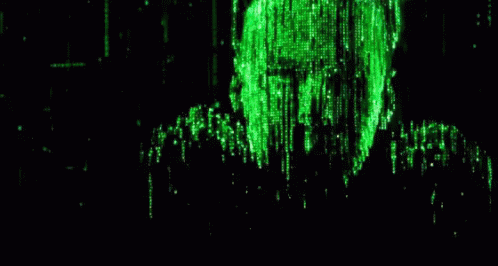As a Gannon student, you are required to take six credits of philosophy which includes three credits taken as Introduction to Philosophy (LPHI 131) and three credits taken as a second course of your choice. Then, you also have the option of taking Philosophy of Ethical Responsibility (LPHI 237) or Theology of Moral Responsibility (LTHE 227). Never having taken a philosophy class before, I was worried it might be boring or difficult to understand. However, I was lucky enough to have the same engaging professor for both the intro philosophy course and Philosophy of Knowledge (PHIL 235). This is where the movie, The Matrix, comes in.
The captivating philosophy professor that I had for these courses was Mrs. Stephanie Barnhizer. She puts a twist on teaching philosophy by always having a book or movie to go along with her class. For Philosophy of Knowledge, our learning tool was The Matrix, a 1999 science fiction movie about artificial intelligence (AI) taking over and uploading human minds into a virtual reality known as the Matrix. I sat down with Mrs. Barnhizer to get her perspective on why this teaching method works so well.
Why do you enjoy teaching philosophy with a learning tool such as a book or movie?
“I try to fit novels in wherever it would be relevant or interesting to teach the course material. For me, I am always trying to figure out how I can employ a book or bring in a movie to teach the course material. I am always looking for ways to do philosophy with science fiction scenarios that seem at least theoretically possible if technology keeps advancing exponentially.”
When did you realize that The Matrix could be a good learning tool for students?
“I have been interested in artificial intelligence for a long time and when I began teaching Philosophy of Knowledge at Gannon, I wanted to relate AI to the philosophical positions and issues in epistemology. But I needed a venue to do this. I thought the movie, The Matrix, would allow me to do this. But I also needed a textbook that would tie epistemological theories and issues to The Matrix. Luckily, I found one, Philosophers Explore: The Matrix edited by Christopher Grau. This is an anthology that explores epistemological, metaphysical, ontological and ethical issues and relates them to The Matrix in a way that allows students to ‘do philosophy’ in a creative way.”
How do you integrate The Matrix into the classroom?
“We watch The Matrix over the first couple classes, so I can get a feel for what students think about it and so that we have a creative background for asking questions about what is real and how we know what is real. Could we be living in a virtual reality right now? Maybe Descartes’ evil deceiver has created us such that we cannot help but think there is a world of physical objects outside of our thoughts and ideas. Or maybe, this evil deceiver created us such that we cannot help but think that two plus two equals four. Or the agents in the Matrix are stimulating our brains with electrodes thereby creating what we think is real. Just how do we know all of the things we think we know? I think The Matrix at least opens the door and forces us to support our beliefs about reality. And it is a fun way to do this!”
If you have not taken your second philosophy course and are looking for a fun and engaging learning experience, I would highly recommend taking Philosophy of Knowledge (PHIL 235) with Mrs. Barnhizer. You might just learn something that will help you start the conversation on the future of artificial intelligence.

